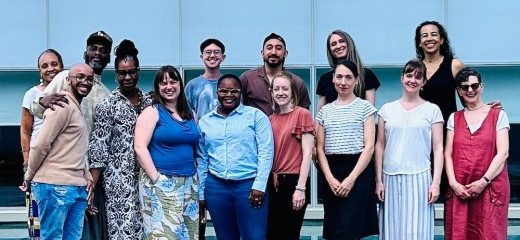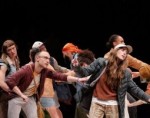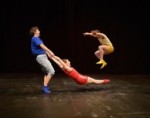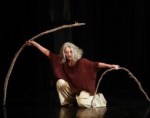
Envisioning a future of possibilities for dance writing
by Ellen Miller
As part of MoBBallet’s Pathways to Performance exercise at the Kennedy Center, Theresa Ruth Howard, the founder of Memoirs of Blacks in Ballet (MoBBallet) invited dance writers together to discuss the role and relevance of dance writing and the evolving field. From the conference description: “The 2021 racial reckoning illuminated the systemic exclusion of voices and perspectives of writers of color. This, in conjunction with the truncation or elimination of dance writer positions from publications, calls for an examination of their role and responsibility to the evolving field.”
“The fact that dance critics are allowed to write their personal proclivities without presenting them as such is a problem,” Howard wrote in Why We Need to Confront Bias in Dance Criticism for Dance Magazine. “The fact that there are so few dance critics of color working for mainstream outlets is another. The fact that critics are under no obligation to disclose their ignorance, yet are imbued with the authority to write about (or around) the work, or worse, dismiss its validity, is yet another.” The Dance Writers Convening was situated to examine and problem-solve around these issues. It was clear from the conversations at the conference that the dance writers present felt this responsibility deeply, and were prepared to move towards action, both in their own writing and collectively.
Walking onto the Kennedy Center campus, I had no idea what to expect. How many writers would be attending? Where would they be attending from? Would they afford thINKingDANCE (tD) the same respect as a print publication? I needn’t have worried. Instead of presenting a rigid syllabus, Howard invited us into an “exercise” where we co-created a learning experience together, which allowed us to continue and build on conversations throughout our time together, adjusting sessions and topics as needed.
About 15 of us came together, a group composed almost entirely of freelance writers, though some were affiliated with major online and print publications. Some writers were developing their own audiences on Substack, and some writers were just starting out. In a critical early session, we did an exercise on privilege, considering the intersections of our identities. This included a range of identity markers, including race, gender identity, socioeconomic status, and age. As a part of that exercise, we also discussed which of our identities were missing from the exercise, and which impacted our work as dance writers the most. This experience allowed us to better see the lenses we bring to dance critique.
We reflected on the declining investment in the arts broadly and in dance writing specifically. Dance writing exists in a broader system of editors, media institutions, and funders and can be influenced by each of those people’s priorities; for example, an editor might prefer writers focus on coverage of major ballet performances like Swan Lake rather than new choreography that might not attract as many clicks. Over two and a half days, we interrogated the systems surrounding journalism, often naming the challenges we faced (disinterested editors, singular storytelling, and lack of funding) instead of focusing on solutions. In a room of peers, it was easy to point the finger at funders, presenting organizations, editors, or business executives instead of taking responsibility for the power we did possess. Howard noted the quiet, subtle, and fragile work of questioning ourselves and the broader ecosystem. “Are we going to be courageous enough to shift into the unknown?”
We talked about managing our expectations as writers and viewers. Donald Byrd, one of the choreographers for the Pathways program, reflected on his experience when critics miss their mark and negatively impact artists. In response to this, he challenged us to approach criticism from the questions, “What are the artists trying to do? Are they successful?” These questions allow writers to interrogate choreography from the perspective of the dancers and choreographers, rather than their own personal preference. Fellow writer Gregory King discussed the work of The Slingshot Project and the Decolonizing Dance Writing project that he led at tD. We asked ourselves,
How can we do no harm? What are our revised rules of engagement to create opportunities for deeper storytelling and more authentic reviews?
Writers hold power, and so we must hold an awareness of our own biases and how they show up in our writing. At the conference, we interrogated the concept of objectivity. Can we review people we know, and what does that look like? We called bullshit on the idea of objectivity, instead considering that maybe knowledge is a strength. We talked about the value of naming, directly, in our writing our biases or limitations, and where we come from. Making the implicit explicit. In practice, this might look like naming that I am unfamiliar with a specific type of dance, reinforcing that the review is only reflective of my own opinion and experience.
Reflecting on her experience at the conference, tD Director Kalila Kingsford Smith shares, “I came away from this incredibly excited and honestly proud of thINKingDANCE. About four years ago, we amended our mission statement to include our intention to dismantle dance criticism’s role as gatekeeper and to actively create a space where critics of color are given a voice. Bringing our newly aligned mission to fruition meant interrogating our internal organization structure, questioning how people were paid, considering the role and standards of editing in whitewashing the voice of the writer, and actively changing some of the ways we worked.”
At tD, the vision we have discussed prioritizing in the writing year ahead includes expanding and mentoring our roster of writers and exploring more experimental forms of reviews and writing. I feel lucky to write for a publication that has consistently supported my desires to experiment and to write more than just performance reviews. It has been exciting to begin to see a path forward—out of helplessness and into progress.
At tD, one of the communities that we consider is our own writing staff—we are all committed to learning and teaching one another. Beyond a single publication, our writing appears on social media, in classrooms, in conversation, and even on applications for legal residency and for grant funding. Our words can be validation or wrecking balls; as Byrd reminded us, the way that we write about dancers and choreography can harm the very individuals we are writing about.
“By being in the room with other experienced writers, I came to understand tD's uniqueness in the criticism ecosystem, being a mission-centered space where writers have a lot of agency,” says Kingsford Smith. “Our organization has already weathered challenges and changing landscapes, so much so that the ’problem‘ of the deteriorating field of dance criticism doesn't feel like a ‘problem’ for us but a site of immense creativity. I was able to see tD as an organization that has the flexibility to weather—maybe even lead in—a changing landscape.”
The conference closed with the opening of Pathways to Performance; while I unfortunately couldn’t stay long enough to attend (day job responsibilities called), it was a treat to be able to attend the dress rehearsal. The program included works by Black choreographers, including newly commissioned and world premiere ballets by Jennifer Archibald, Kiyon Ross, and Pathways to Performance Fellow and MoBBallet Symposium alum Meredith Rainey. Additionally, the program highlighted MoBBallet Symposium alum Portia Adams and a restaging of Byrd’s From Other Suns, which was commissioned by the Kennedy Center in June 2022 as part of Reframing the Narrative.
Of Kiyon Ross’s Quick Pleasure, fellow writer Marcie Sillman writes, “Edwards’ pointe work is like maple syrup, sweet and fluid, while Hughes jumps and spins like a wind-up toy.” Edwards and Hughes’s luminosity on stage reminded me of what we are fighting for—and the possibilities that unfold when emerging artists are given platforms to play and perform.
Sitting in our annual thINKingDANCE “dreaming” meeting a couple weeks ago, I felt a similar spark. The idea that we can create a better, more equitable dance writing world. That it’s possible. I can’t wait to get stuck in. And I can’t wait to hear what my colleagues across the country have accomplished when we convene next.
Pathways to Performance /MoBBallet Dance Writers Convening, Kennedy Center REACH, June 30-July 2, 2024.
Homepage Image: A laptop sits open on a wooden table. On screen the description for the MoBBallet Dance Writers Convening is displayed. Next to the laptop on the table are an iced latte, a thINKingDANCE pen, and a thINKingDANCE business card.
Article Image: A group of dance writers stands in two rows facing the camera. They are wearing bright colors, smiling, and squinting into the sunlight.
By Ellen Miller
August 22, 2024










